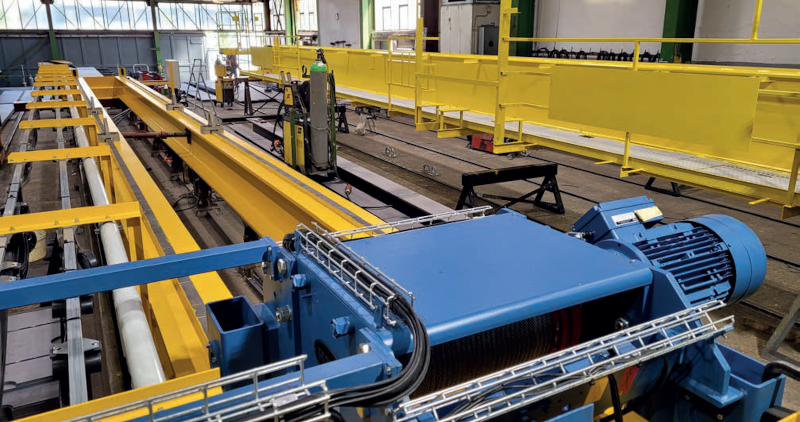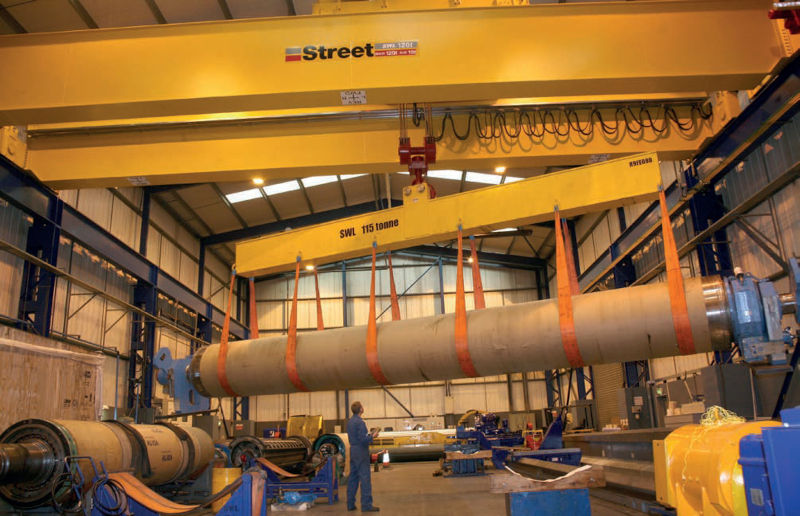Heavy duties
8 September 2021As demand for heavy lifting grows, manufacturers advise that success is all in the planning. Keren Fallwell reports
As so much in the world is getting bigger so demand for heavy manufacturing is growing, and lifting capacities are increasing. Super-sized container ships and oil rigs to energy plants, factories and warehouses, all require heavy lifting equipment and the hoist sector is keeping pace.
“Our customers are moving bigger pieces in larger halls, so the capacity and span of cranes is growing,” says Kuli export manager Oliver Riese.
“Demand for heavier equipment is rising, possibly because the production of larger components is increasing.”
In the past 10 years Street Crane has experienced a 60% increase in orders for heavy lift cranes and hoists.
“The underlying picture is that in the developed world, which has a shrinking heavy industrial sector, orders have declined but for us this has been more than offset by developing countries where the heavy industry is still growing and where we have increased our presence,” says director Andrew Pimblett.
Ingersoll Rand has noticed the super sizing trend in several industries, not least the oil and gas sector. “Fifteen years ago the weight of most blowout preventer stacks (BOP) was 20-75t; today they’re 50-150 or 200t so the equipment to handle them has to have a higher capacity,” says Gus Caldera, global business development leader, Rand Material Handling.
Shipyards and ports are also specifying heavier lifting equipment as ships and propellers increase in size, and with that, fuel capacity. “Bigger ships have larger components and heavier loads so we’re building bigger and bigger hoists. In the past year I’ve seen 100 ton hoists ordered,” says Mark Koski, North American commercial leader at Ingersoll Rand.
No matter what the lifting capacity, the paramount concern is safety. “The first consideration is always safety and compliance with regulations,” says Pimblett. “In common with other manufacturers, Street Crane goes to great lengths to ensure our designs fully comply but that is only half the story: end users must be equally rigorous in their use of lifting equipment.”
Caldera agrees safety is the highest priority for customers installing heavy lifting equipment.
“Sometimes they will over-engineer what they require in terms of capacity to ensure nothing goes wrong,” he says.
In the US, lifting equipment above a 3t capacity typically requires an annual inspection. Smaller capacity hoists can be removed and sent to the manufacturer for inspection, says Koski, but larger capacity units are inspected and tested in situ.
“For heavier lifts,” says Caldera, “you need to have testing equipment on site to do a proper functioning test. Some customers use water bags to test 50t or 100t.”
Kuli says easy maintenance is always important, but particularly for heavy equipment. “All of our hoists, up to the strongest four-falls hoist with 63t capacity, are subject to the same, easy-to-maintain architecture,” says Riese. “Motor, gearbox and drum are arranged in one line so if there are any motor issues you just unscrew the motor block without removing any other parts. This helps even if you have to change wear parts, such as brake parts or a cooling fan.”
While smaller loads may be sustained with self-carrying loads, capacities over 5t are installed on integrated crane tracks so the decision of a single or double girder must be made.
“Double girder cranes can have better load distributions and better hook paths. Moreover, you are able to install walkways and platforms,” says Riese. “Single girder cranes are usually lower in price and normally have better horizontal hook approaches.”
Ideally, because of the sheer size and demands of heavy lifting, the cranes should be designed in tandem with the building, well before the first spade goes into the ground.
“It is important to consider well in advance the crane’s wheel loads and approach dimensions, without forgetting the working cycles. The overall height of the crane naturally plays a key role in defining the dimensions of the building and it has a direct impact on the cost of the building,” says Paresh Naik, product manager, winch cranes and components at Konecranes.
Street Crane agrees that the supporting structure is a key consideration when installing an overhead crane for heavy lifting. “Street supplies cranes and hoists with capacities up to 250t, mostly for installation in steel frame buildings. At higher capacities building structures must be purpose designed for the crane loadings. At lower capacities it is sometimes possible to retrofit a free-standing gantry to support the crane or hoist inside an existing building,” says Pimblett.
For Koski, the two key considerations are headroom and the beam, and solutions often require Engineering To Order (ETO). “With larger capacity lifts you have to consider the load-carrying parts. Number one is the beam. In an existing building the beam may not support the load so that changes the whole design criteria,” he says. “The headroom dimension is critical to clear whatever is below the lift. We can make a tighter envelope but it’s more expensive. I tell customers all the time: ‘the less headroom you have, the more costly it is’.”
Positioning the heavy lifting equipment also requires more planning. “To install larger units requires fork lifts, smaller air hoists and manual hoists, and once it’s in you have to do the annual load testing and inspections. For that you need certified weights so you have to have or rent those as well,” says Koski.
When thought hasn’t been given to how the building will accommodate the crane or to how large industrial units are moved within the building, the solutions can require cost and ingenuity. “For so many people the lifting equipment is an afterthought – they need to do maintenance, they have an existing building envelope and the standard product doesn’t work. We’re seeing a huge uptick in our ETO business where we’re modifying existing product lines to make it work,” says Koski.
“A couple of years ago a cement plant needed to remove the 25t motor on the crusher. They hadn’t considered the beam or maintenance so they had to cut out the side of the building, weld in a new beam, then put a hoist in just to remove the motor.”
Kuli recently had to use a special lifting device to install a crane in an existing building. “We couldn’t use a mobile crane with a hook coming from above so we used a lifting platform which could carry the crane from below and be ranked on the smallest areas. The crane had a 12.6t capacity and a 14.6m span and weighed around 7.5t,” says Riese.
GH Cranes also says the ideal is to design the building and cranes together but it has been involved in projects where the lifting is a late addition. “We are finding long-term rentals in logistics parks where no crane runway was considered initially. In those cases we install crane columns and runways independent from the building structure,” says Alexander Guerra, sales director standard cranes.
As the global economy evolves and environmental attitudes and policy change, so too does demand.
The metals industry has long been Street Crane’s biggest market for heavy lifting but the dynamics have shifted. In the main, orders for metal manufacturing now come from developing countries while metals and steel distribution continues to be an important source of orders in Europe, North America and other advanced economies.
“We are currently installing a series of heavy-duty 5 + 5t twin hoist single girder cranes for tandem lifting steel sections at Rainham Steel in the UK, and our partner Total Hoists and Cranes recently installed nine cranes, including 6.3 + 6.3t twin hoist cranes and a 10t goliath crane at Infrabuild’s new steel distribution facility in Western Australia,” says Pimblett.
The automotive industry is another traditional industry that constantly adapts to manufacturing cost and demand change so crane orders now come from anywhere, he says. “We recently supplied two wire rope hoists of 30/10t capacity to Suzuki in Hungary, through our partners Darusin, and Atlas Honda in Lahore have ordered two die handling cranes with a 30/20t capacity from our Pakistan distributor Otto Manufacturing.”
The energy sector is a big area for heavy lifting and, reflecting changing environmental attitudes, green energy projects have created a new global market for suppliers of heavy lifting equipment.
GH Cranes has supplied a Brazilian wind turbine blade manufacturer with several cranes for tandem operation, featuring spans over 50m and built-in monitoring.
In Finland, Konecranes is providing more than 40 lifting products to Wärtsilä’s Smart Technology Hub, a centre for research, product development and production of solutions for the marine and energy industries. The order, which will be delivered in batches starting this autumn, includes Konecranes’ S- and C-series lifting products, up to 400t engineered-to-order open winch cranes, overhead cranes with a lifting capacity between 2-32t, workstation lifting systems, and manual hoists.
Street Crane recently supplied multiple radio-controlled wall-travelling twin hoist jib cranes to Siemens-Energy for blade production in the UK and Morocco. Overhead cranes for these projects include tandem 40t double girder cranes to lift the complete blades, which can be up to 108m long, as well as a 100t double girder crane for a storage area.
“In India we supplied the hoists for 22 cranes, including capacities of 20, 32, 40, 60 and 80t for Vestas Wind’s new turbine gearbox facility near Chennai. The crane bridges were fabricated locally by our partner K2 Cranes,” says Pimblett.
In Greece, Street Crane supplied components, including hoists, for 18 top-running and underslung cranes with capacities up to 20t for a Terna Energy renewables project through ABB.
And in New Zealand, through its distributor Verissimo Group, Street Crane installed five 10t tandem cranes with vacuum lifting and predictive anti-sway control at timber structures manufacturer Lamina Timber.
In a more traditional market, Kuli recently manufactured a 10t crane with a 16m span for a supplier of concrete parts, while a 6.3t crane for a steel fabrication plant is in production. It has an 18m span including walkways and platforms.
Engineers revel in the unique application for hoists. Ingersoll Rand is particularly proud of its role in positioning NASA’s largest rocket – the 200ft-long Pathfinder – into the launch tower. The crane did the heavy lifting to position the Pathfinder then Ingersoll Rand was called on to articulate the rocket’s position. “They hooked our hoist to the hook of the crane so they could tweak the rocket,” says Koski.
Ingersoll Rand supplied its Hercu-Link chain hoist, but in the “odd size” of 12t and with the ability to control the speed very precisely. “Most industrial companies want to lift as fast as they can but fast speed wasn’t the issue; it was about precision. We articulated the load at about 1.5ft per minute,” says Koski. The operation was so successful that NASA placed a second order with Ingersoll Rand.
Precision and low speeds are often required for heavy lifting. “Spotting capabilities and the ability to move the load at very low speed is very important,” says Caldera. “With heavier lifts you also need a motorised trolley, whether it’s electric, pneumatic or hydraulic.”
GH Cranes says for heavier lifts it can combine low speed for precision positioning with high speed for travelling. “Using the built-in load cell, when the load is below 25% of nominal capacity, we can activate 60% lifting overspeed. Micro speed is a frequent option when high volume/high value loads need precision positioning,” says Guerra.
For the heavy lifting market there is no shortage of new products to consider. Later this year GH Cranes will introduce its new generation GHE17 hoist for capacities up to 20t. Also this year, Street Crane will add to its ZX wire rope hoist range with the launch of a new 15t low headroom model designed to provide “very competitive single girder crane and hoist solutions at this capacity”.
Towards the end of 2019, just before the Covid pandemic hit, Konecranes began selling its three new products, the C- (up to 5t), S- (up to 6.3t) and M-series (up to 63t), in Europe and they have since been introduced to other regions globally. “The M-Series is a heavy winch that is bringing a new level of modularity in process environments,” says Naik. “With the S-Series rope hoist we introduced never-before-seen features like the tilted drum, offset reeving, synthetic rope and the girder sliding connection.”
As industries evolve, customers’ lifting specifications reflect those changes. A recent trend is tandem heavy lifting. “We are receiving more enquiries for two hoists on one crane,” says Riese. “Either one large main hoist and one smaller auxiliary hoist with lower capacity and higher speed, or two hoists with the same capacities, which will often be used simultaneously, or even two hoists on a rotating grab, especially for long loads.”
Street Crane is also seeing more interest in tandem lifting. “We put this down to increased awareness of the safety issues around handling long loads, the worldwide growth of sectors that produce long products, such as wind turbine blades and, until recently, aircraft wings. Another factor is steel mills now supply beams and sections in longer lengths,” says Pimblett.
At Ingersoll Rand, demand for custom applications, controls and greater monitoring is driving more demand for ETO projects. “Change is driven largely by health and safety requirements – removing the operator from the application as much as possible and providing immediate feedback and control,” says Caldera.
Street Crane has also experienced increased demand for customised cranes and hoists, especially in the advanced manufacturing and research sectors. “Some of the new, high-profile industrial processes require unique solutions, for example the world’s largest jet engine test bed which recently opened at Rolls-Royce in Derby in the UK,” says Pimblett. “We supplied highly customised, process integrated underslung cranes to lift the gas turbines.”
One of the most special cranes Street has manufactured in recent years travels around a circular building constructed largely of glass to showcase the advanced manufacturing technologies of AMRC with Boeing’s Integrated Manufacturing Group. “We call it the ‘doughnut’ because it runs on two circular tracks of different diameters,” says Pimblett.
Safety and efficiency are also boosting demand for automated cranes, says Naik, particularly in applications such as steel coil and paper roll handling, waste-to-energy and metals processing where customers are also automating their own core processes.
Manufacturers agree customers’ demand for customisation and automation will continue, and with that, the development of smart technology. “Industry 4.0 will certainly have an impact in this area,” says Naik. “With the help of data, we can support our customers’ decision-making, process efficiency and sustainable material flow.”
There’s no doubt that the Covid pandemic has impacted on heavy lifting business but the vaccination programmes around the world are helping to stimulate activity again. GH Cranes describes the second and third quarters of 2020 as “a mess” as the pandemic halted projects and buying decisions but it has seen business pick up and expects that over the next 12 months it will return to 2019 levels. “The situation stabilised by the end of the year and from the beginning of this year it seems the markets were already making decisions faster,” says Guerra.
Kuli, which believes business will resume pre-Covid levels in Q3 this year, says demand has been growing since the beginning of the year. “It feels as if business is growing, especially in countries with high numbers of vaccinated people,” says Riese.
“We hope that vaccination in Europe will speed up and result in an economic boost for us all.”
As Street Crane points out, however, the rate of growth depends on the success of tightening the grip on Covid. “We expect the recovery in the North American market to level off and recovery in Europe and the Middle East to take off,” says Pimblett. “Elsewhere, markets are likely to perform better or worse, depending on the effectiveness of their battles with Covid.”
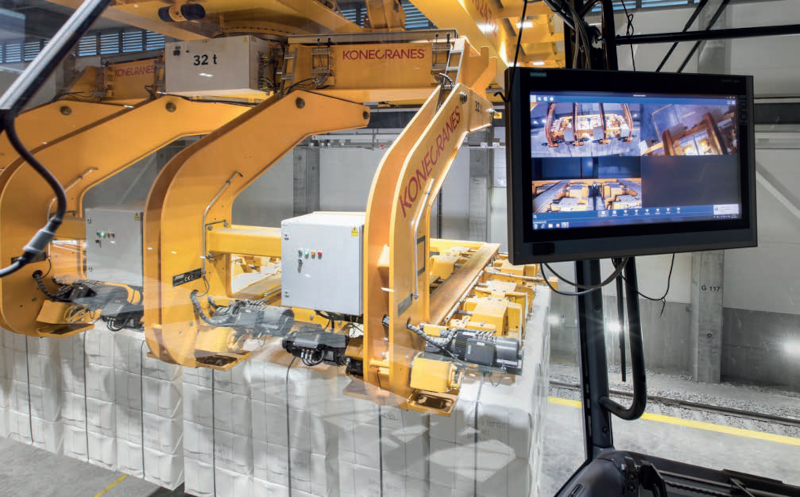 Konecranes and other manufacturers note that customers are seeking greater automation and remote control
Konecranes and other manufacturers note that customers are seeking greater automation and remote control
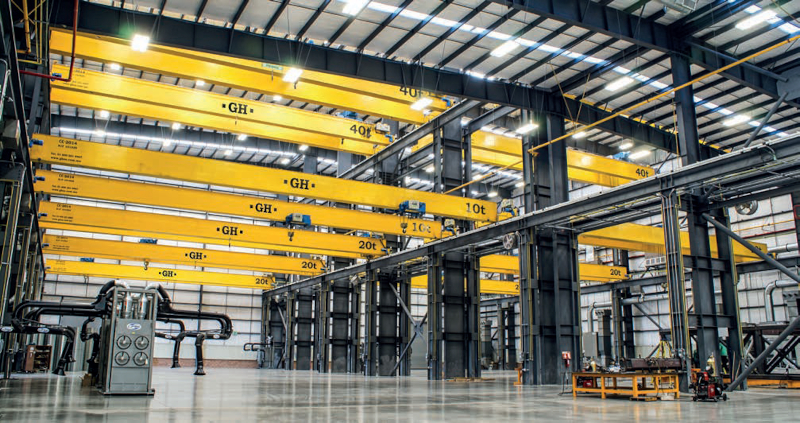 GH Cranes says for heavier lifts it can combine low speed for precision positioning with high speed for travelling
GH Cranes says for heavier lifts it can combine low speed for precision positioning with high speed for travelling
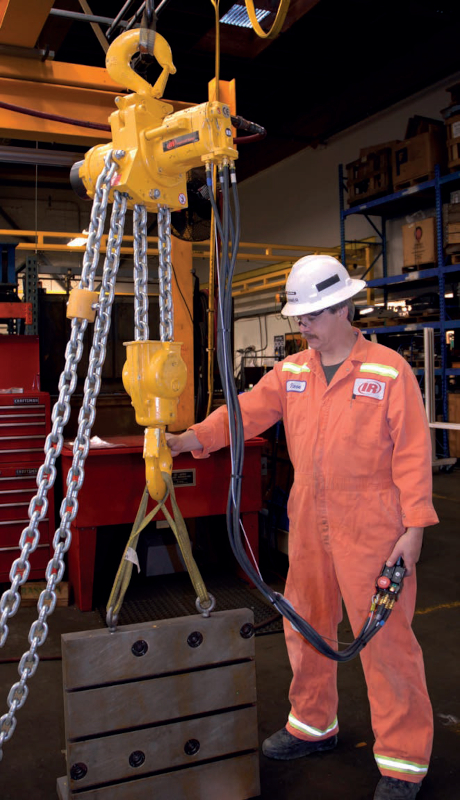 Demand for heavy lifting is growing as components in many industries get bigger PHOTO: INGERSOLL RAND
Demand for heavy lifting is growing as components in many industries get bigger PHOTO: INGERSOLL RAND
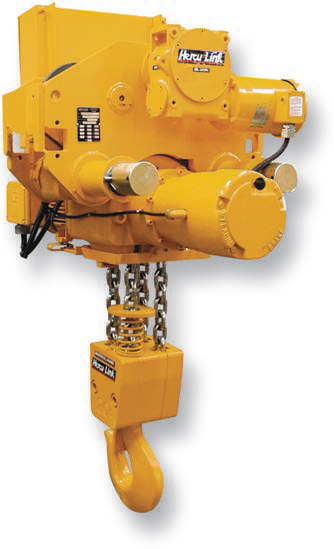 A 12t version of Ingersoll Rand’s Hercu-Link chain hoist was used at NASA to articulate the position of the Pathfinder rocket in the launch tower PHOTO: INGERSOLL RAND
A 12t version of Ingersoll Rand’s Hercu-Link chain hoist was used at NASA to articulate the position of the Pathfinder rocket in the launch tower PHOTO: INGERSOLL RAND
